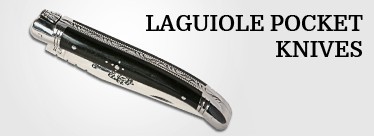Anecdotes you may not know about the history of the Laguiole
Published : 2019-01-10 17:30:01
Categories : The making of a Laguiole

Whether you’d like to add to your general knowledge or to impress with your expertise during fancy dinner parties, here are some little known facts...
Key figures...

• 1828 : Setting up of the first cutlery making workshop in Laguiole. Almost 2 centuries of cutlery-making in Aveyron can hardly count for nothing !
• 1840 : The punch or trocar is added to the Laguiole knife and has been one of its features ever since.
• 1880 : Corkscrews appear on Laguiole knives, thanks to exiled Aveyron dwellers turned Parisian café-owners who had this brilliant idea !
• 1909 : First appearance of the world-famous bee of the Laguiole spring !
• 1950 : Closing of the last hand-forge in Laguiole
• 18000 : Number of knives which were manufactured in Laguiole in 1900. Evidence that, even without complex machinery, man’s productivity is staggering.
• 40 : Number of steps required to fully assemble a knife. Cutlery making is a delicate profession.
Does size matter ? Laguiole knives range from 8cm for the smallest of them up to 38cm for the wedding knife… Enough to please everybody !

A few anecdotes on cutlery making in Laguiole
The Cutlery Makers Corporation was created in Aveyron in the 18th century. It was mostly composed of bourgeois, noblemen and professional knife makers.
At the beginning of the 19th century, bourgeoisie’s taste for beautiful knives inspires the creation of wedding knives. Tradition dictated that when the future son-in-law was acepted in his new family, his father-in-law would offer one of those big knives, called ‘wedding knife’ to the fiancés. This gift was proudly displayed in the newlyweds’ house and was brought out for special occasions to cut up the turkey or leg of lamb.
During the 17th and 18th centuries, St Etienne was the leading French manufacturer of affordable folding knives.
During WW1, many Aveyron dwellers left to fight on the front. After the end of the war, some chose to stay in the capital and became café-owners or brewers, but moved by their love for the home region, they kept promoting their native land and the know-how of the Laguiole cutlery makers.
The 1st aluminium Laguiole was made by cutlery maker Léon Glaize (aka le Glaizou). After being drafted into the French Army ranks during World War 1 he decided to make a knife fit o stand life in the trenches. He even added a corkscrew, and who could blame him, best be well-prepared when going to war.















